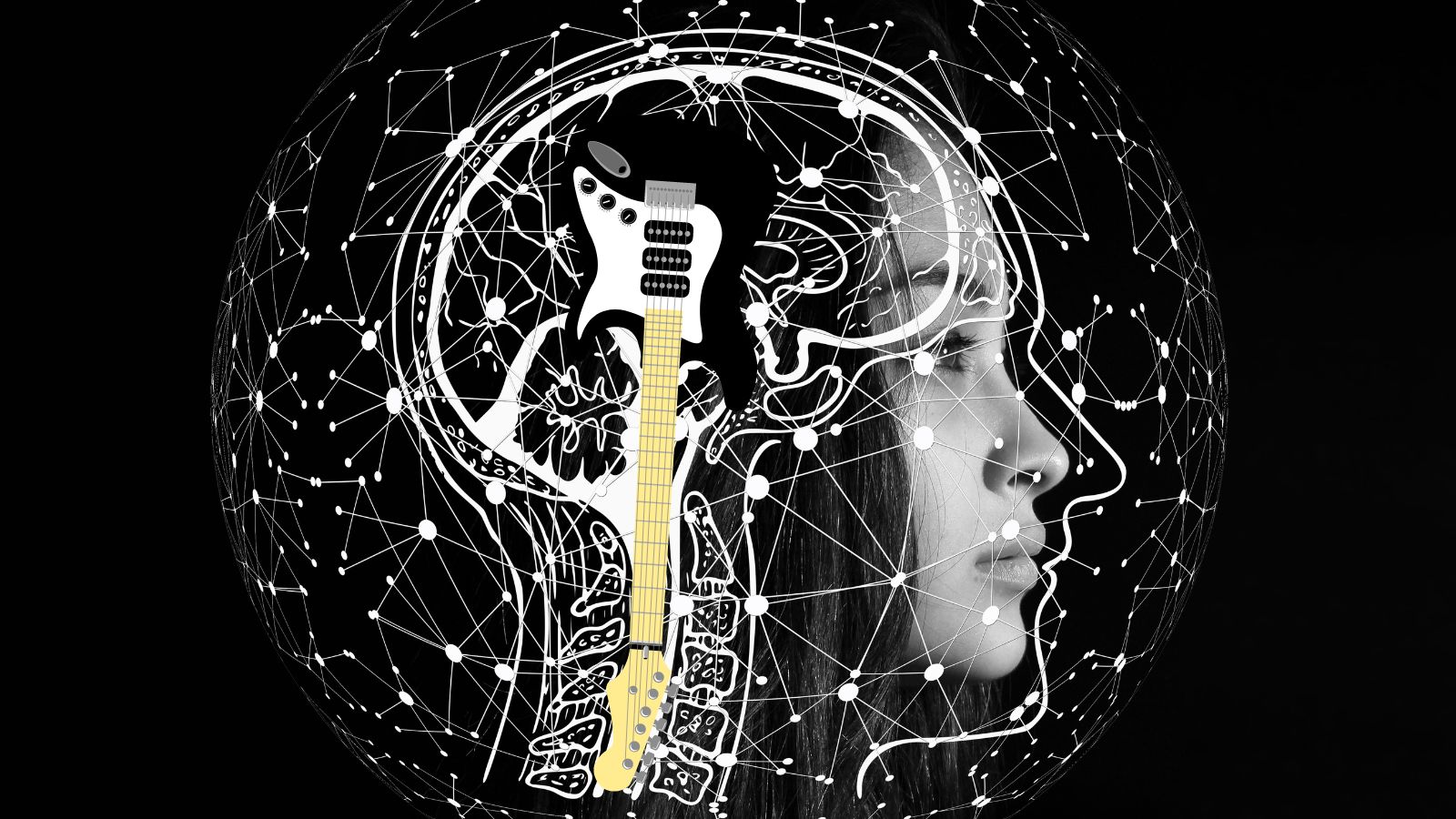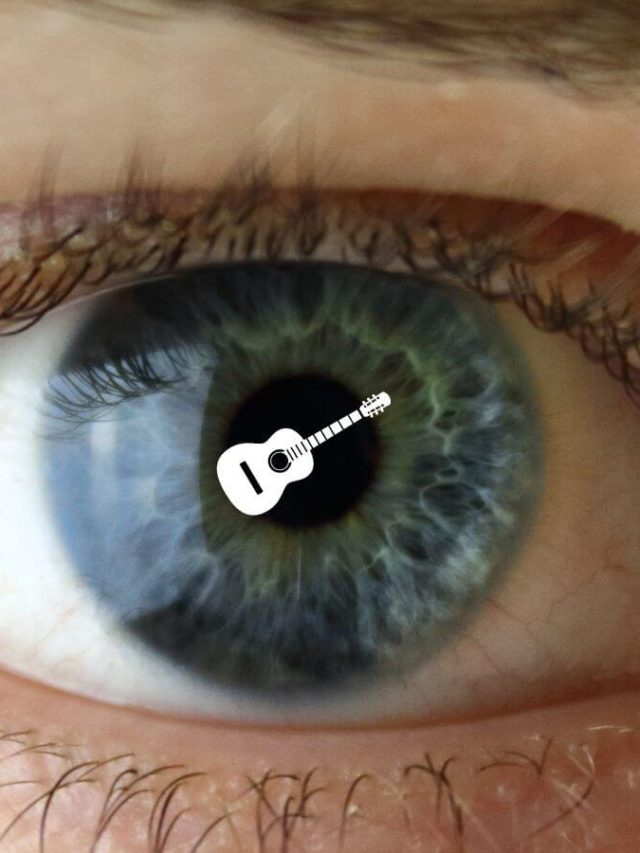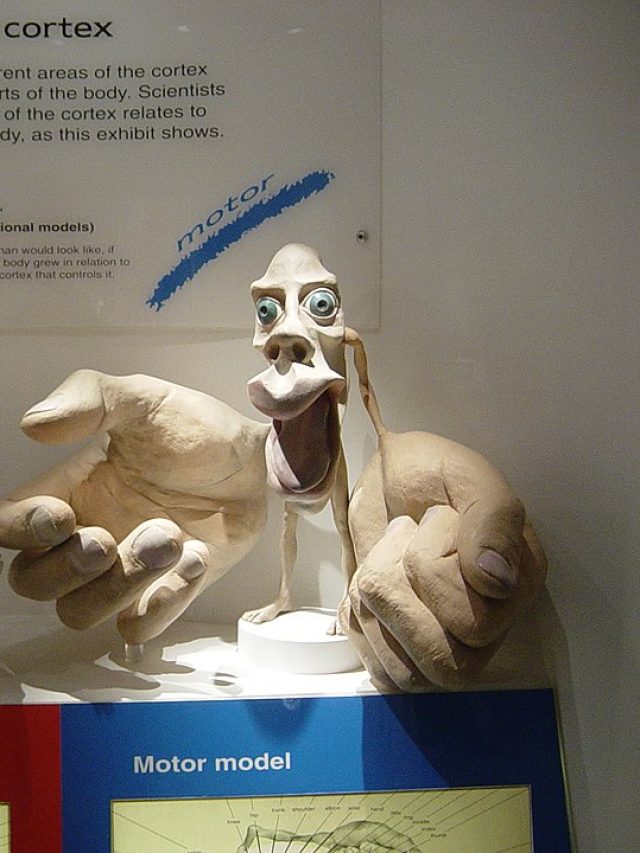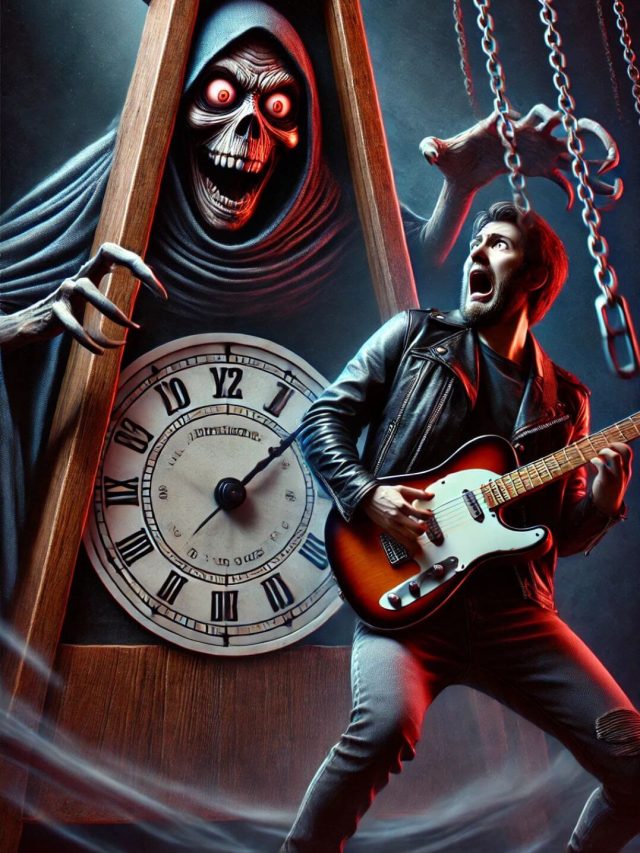Guitar playing starts neuroplasticity in the brain which has many positive effects on overall brain health and cognitive skills. And it extends to other people’s brains.
Chapters
Learning to play changes the brain in good ways
When you are learning the guitar, you are engaging a large portion of your brain. As you practice, the brain changes itself structurally and functionally. This is neuroplasticity[1] induced by guitar playing. Parts of your brain will start talking with each other in new ways, called functional plasticity. And new neurons and existing connections between neurons (synapses) will strengthen and form new connections, called structural plasticity.
Many other things will change – the efficiency of communication between neurons, the number of neurons used to do something, backup neural circuits which support new learning, the amount of activity in the executive center of the brain that deals with new information, the amount of activity in the most habit-based automatic parts of the brain, etc. All of this is the process of learning at a biological level. What your brain experiences is neuroplasticity, and what you as a guitar experience is improvement in skill.
Different components of playing the guitar recruit different parts of the brain. For example, guitar learning is both abstract and concrete learning. By abstract, I mean the representation of music is different from what is actually done on the guitar. And by concrete, I mean the representation of music is similar to what is actually done on the guitar. The right precuneus is more involved in abstract thinking like reviewing notes as tabs or notations, and the occipito-insular circuit is more involved in concrete thinking like watching actual chords and chord diagrams. Both regions undergo neuroplasticity[2] in unique ways while becoming an expert guitarist.
Going through a long learning activity like playing the guitar changes the brain in ways that benefit us. Playing the guitar can protect you against age-related cognitive decline and Alzheimer’s and even improve generalized parts of your problem-solving and pattern-recognition skills.
1. Transfer effect
When we practice one skill, it’s not just the skill that improves. Sometimes, it automatically improves skills in other areas. Playing the guitar with vocals can improve multi-tasking skills, and good fretting control can help with typing, knitting, and even surgery. In some cases, the ability to memorize songs might help with taking a big-picture view during project management. The transfer effect says honing one skill in one context can give performance gains to another skill in a similar context and sometimes in an unknown context.
There may be “near transfer effects” like improved typing, better hand-eye coordination, better memory for shapes, etc. (performance gain in similar contexts)
And “far transfer effects” like improved language and logical reasoning. (performance gain in different contexts).
Cognitive skills used by the brain: visual memory (how the guitar and hands look), spatial memory (arrangement of notes), decision-making and planning (composing, improvising), auditory memory (ear training), pattern recognition (identifying notes and mimicking guitarists), reaction time (staying on time), shifting attention (between both hands, between musicians and what they are doing).
All of these skills are useful in most other domains of life, and playing the guitar can transfer performance gains from a musical context to other contexts. Sometimes, automatically, and other times, on purpose with deliberate thinking.
2. Cognitive and brain reserve
Cognitive reserve is the set of cognitive tools that we develop through any activity, which become “backup” resources for the brain. Brain reserve is a similar set of backup neural structures that can take over and help other neural circuits execute a behavior. Learning anything develops cognitive and brain reserve. That helps the brain defend against age-related memory loss, neural degradation through diseases, and even “super age”. Super agers are older people who have the cognitive ability of someone decades younger, meaning they are generally far sharper and smarter than the average old person.
Cognitive and brain reserve[3] are 2 of the biggest defenses against Alzheimer’s and other dementias. Since the brain is a use-it-or-lose-it object, using the whole brain via guitar playing improves overall brain health.
3. Fine motor development
The brain’s somatosensory and motor cortex work together to form your “muscle memory”. Most forms of guitar-related movements are “fine motor movements”. These regions govern those fine motor finger movements and how fingers and general body posture respond to sound and playing feedback. Playing the guitar uses and builds stable neural circuits in both these areas that then give more finger control. This increases brain reserve and fortifies many other structures of the brain because the brain gives a lot of processing capacity for finger movement and sensation. The homunculi image shows this well.
Apart from the transfer effects of developing fine-motor control via learning the guitar, there is another added benefit. Guitar practice can help in fine-motor recovery after brain injury.[4]
The image below describes how much “cortical” space and processing is dedicated to each body part that interacts with the world directly. Cortical regions form the brain’s cortex (the folded regions) which do most of the information processing and represent memory. Observe how large the hand is – the brain-finger connection is the strongest connection apart from the brain-face connection.
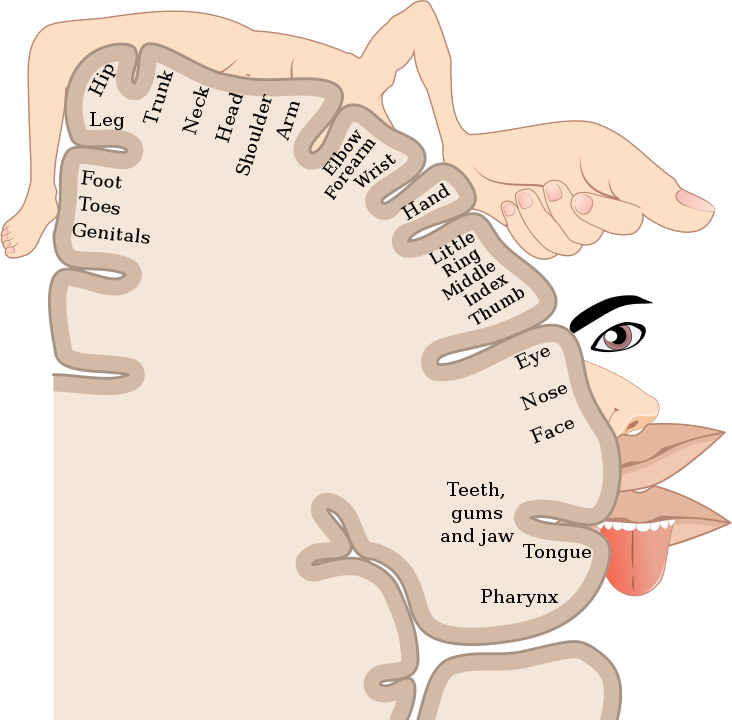
Here’s a 3d representation of the same.
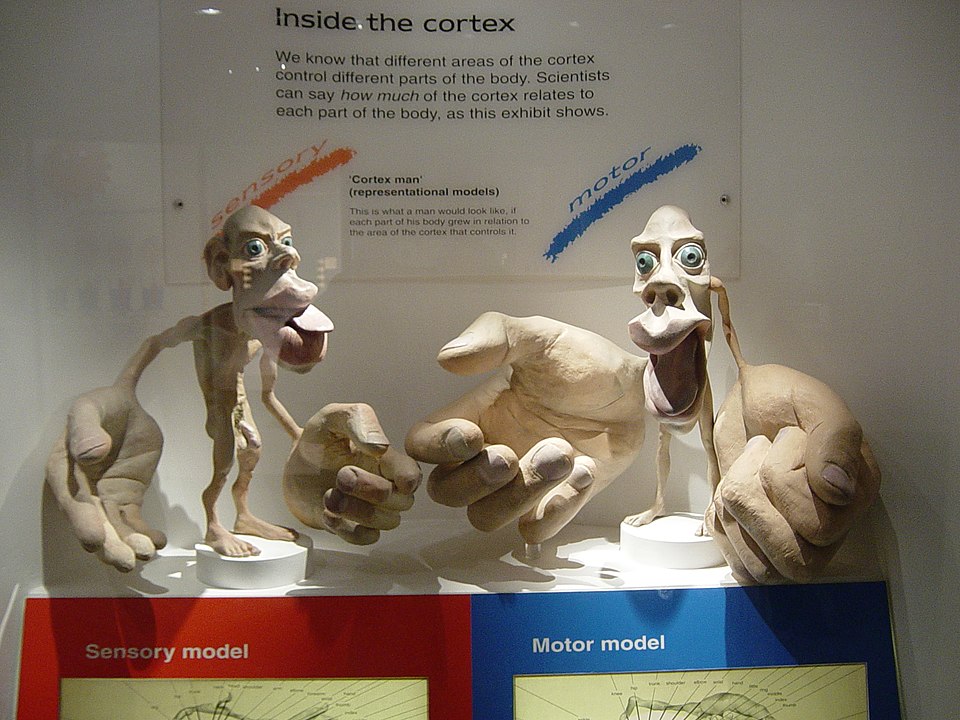
Ichika Nito’s homunculus would have larger hands that won’t even fit the image.
Guitarists’ hyper-brain connection
When guitarists jam together while improvising or performing a known song, their brains synchronize in a fascinating way. They form a hyper-brain network of 2 or more brains. One study[5] recorded EEG signals of 2 guitarists jamming together and saw there is a synchronization of brain waves. Different regions of one brain communicated with each other using high-frequency beta waves but the 2 guitarists’ brains synchronized with each other using low-frequency delta and theta waves. What this really means is that the 2 guitarists’ brains matched their metaphorical and literal wavelengths in a hyper-brain system using low-frequency signals. But, simultaneously dedicated the high-frequency signals to execute their own playing.
Another study[6] found a similar pattern for up to 4 guitarists playing together (did not see how 20 guitarists playing together would look like, but it might be similar). The researchers also concluded saying that low-frequency synchronization is random and changes over time, possibly through the experience of jamming and learning new music together.
Effectively, what these 2 studies show is that 2 guitarists’ brains co-develop and recruit similar processes to speak to each other musically. And this musical body language develops as a feedback loop between 2 guitarists. To take a generalized perspective, playing the guitar with other guitarists improves overall social coordination and cooperation. The process of doing this can teach guitarists many soft skills and teamwork that help in other domains of life.
I joke about this, but there is some truth to it. Being in a band is like being in a relationship with 3+ people at a time.
Playing guitar can be therapeutic
Playing guitar reduces random intrusive thoughts while playing because the brain’s attention is fully occupied. Of course, you may still have negative judgments about your skill level, but those are specific. Random intrusive thoughts are often related to a past negative event, a future anxiety, or a present ongoing problem. Essentially, music helps us manage emotions.
Playing guitar can help with pain management too, by creating pleasure signals in the brain and distracting it from the pain. Like with most art, people can forget about their worries and pain when they are engrossed in a creative process.
A musical instrument hobby creates work-life balance in most cases by drawing a boundary around the hobby. It becomes a routine and a structure where nothing is at stake – you play to relax and take your mind off work.
Those with a musical hobby generally have a lower chance of developing crippling anxiety, depression, and psychosis because making music is a creative and physical process that is inherently rewarding. It grounds you so that you don’t spiral into negative states.
In some cases, playing the guitar can be a physical activity to rehabilitate after injury or disease. For example, playing the guitar is a way to improve finger dexterity after trauma to the palm.
More on the therapeutic effects here.
All of these processes rewire the brain in ways that help you.
References
[2]: https://www.sciencedirect.com/science/article/abs/pii/S0304394021000021
[3]: https://cognitiontoday.com/brain-reserve-and-cognitive-reserve/
[4]: https://pubmed.ncbi.nlm.nih.gov/12062028/
[5]: https://journals.plos.org/plosone/article?id=10.1371/journal.pone.0073852
[6]: https://nyaspubs.onlinelibrary.wiley.com/doi/abs/10.1111/nyas.13656


